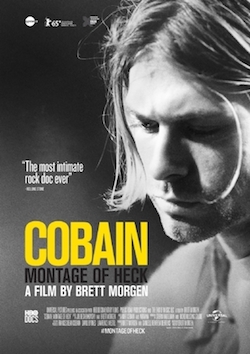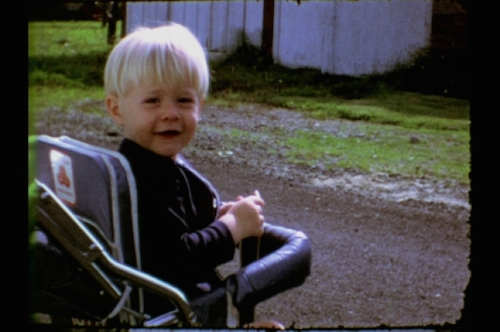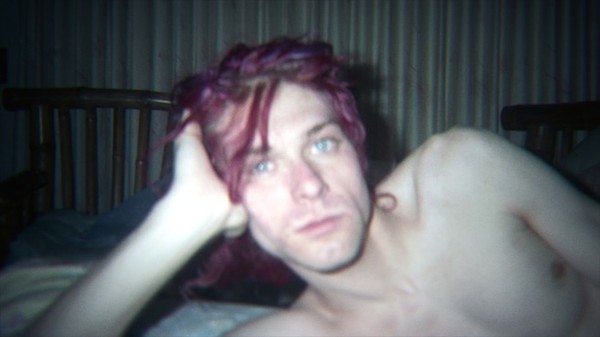The Ultimate Kurt Cobain Doc

Courtesy of HBO Documentary Films
It’s tempting to wonder what Kurt Cobain would have thought about Kurt Cobain: Montage of Heck, the much buzzed-about new documentary by Brett Morgen. On the one hand, he probably would have appreciated the unorthodox visuals, much of it dark, unsettling animation that builds on the musician’s own drawings. He would probably have been OK with Morgen’s use of Cobain himself as the main narrator, through interviews, home movies and notebook entries. But being an easily humiliated soul (one of the film’s revelations) who both craved attention and hated fame, Kurt might have had a hard time digesting such a raw, unflinching portrayal of himself, or really, any portrayal of himself. As the film shows again and again, Cobain was tormented by his own contradictory nature – he both wanted and despised normalcy, success, maybe life itself.
Like Morgen’s The Kid Stays in the Picture (adapted from producer Robert Evans’s autobiography), this is far from a conventional documentary. With its elaborate animation sequences and chaotic audio and video montages culled from films, ads and other sources including Cobain himself, it’s almost an art film – which makes sense given Morgen’s attempt to portray the inside of his subject’s head. It’s not a pretty place.
Montage of Heck (the title comes from one of Kurt’s own audio creations) is the first documentary about the Nirvana frontman that is “fully authorized” by his family. (Daughter Frances Bean Cobain is an executive producer; Kurt’s parents, sister and widow Courtney Love are all interviewed.) Yet it is is not gentle with its subject or his intimates, including Love. The latter, shown in a rather ragged state in several clips, is fairly candid about her own weaknesses and role in the drug-fueled lifestyle she and her husband shared. Also interviewed is Nirvana bassist Krist Novoselic, who provides some insightful commentary on the band’s rise, while drummer Dave Grohl is conspicuously absent from the film.

Courtesy of HBO Documentary Films
Though Nirvana fans are already familiar with a lot of this stuff – Cobain’s depression, his stomach problems and struggles with heroin and fame – we’ve never seen his story presented in such wrenching detail or depth.
It begins with home movies of a cheerful blonde toddler, clearly enjoying all the attention that came from being a “magnet to everyone,” according to Cobain’s mother Wendy. Constantly in motion, strongly drawn to both music and art, young Kurt became especially hyper and uncontrollable after his parents’ divorce, and was shuttled around to various family members. According to sister Kim, he both wanted and despised a normal family life, already exhibiting the duality that would become his life’s motif. Wildly creative, antisocial and ridiculed at school, he makes an early suicide attempt before finding solace in punk rock, which became a haven and escape, as it was for so many alienated kids. Obsessively preoccupied with writing songs and playing guitar, he forms a band with friends Novoselic and Grohl.
Their music is instantly powerful. Even at the rough early gigs shown in the film, the band seemed completely in command (Kurt was a big proponent of practice). As anyone who ever saw Nirvana in the early days can attest, they were incredibly good live. The mega-fame that came via major label debut Nevermind would have been challenging for most humans, let alone the distressed Cobain. By this time he was into heroin, which he had begun using to dull the chronic stomach pain he never found a treatment for.

Courtesy of HBO Documentary Films
Love’s involvement in his life and their undeniable attachment is shown via messy, affectionate, sometimes painful home videos. (If this film doesn’t dispel the notion that she was somehow responsible for her husband’s misery and death, nothing will.) The couple’s joy over the birth of Frances and Kurt’s satisfaction with fatherhood are offset by rampant press reports of the couple’s heroin abuse and Kurt’s own spiraling addiction. The film mercifully ends a month before his suicide.
A rough, sometimes indulgent film, Montage of Heck demystifies its subject without taking away from his immense talent and musical legacy. Its ultimate sad takeaway is that this unhappy “spokesman for his generation” never had much of a chance; given Cobain’s demons, it seems remarkable that he even made it to 27.
Kurt Cobain: Montage of Heck will screen at the Tribeca Film Festival before opening in theaters later this month; it airs on HBO May 4.
—Marina Zogbi

